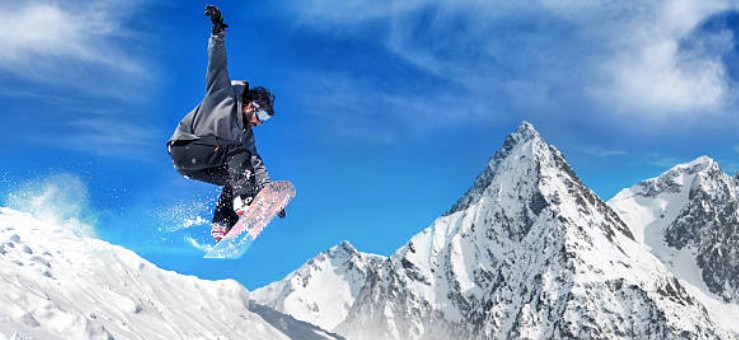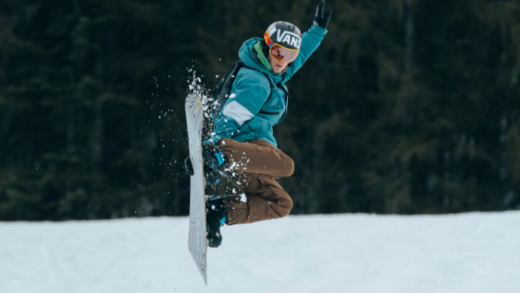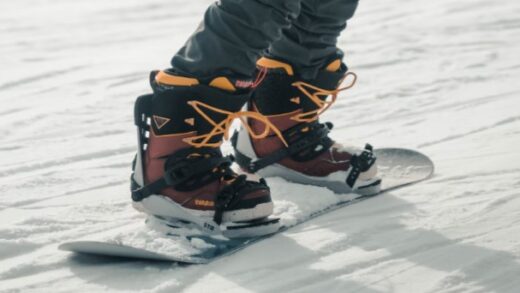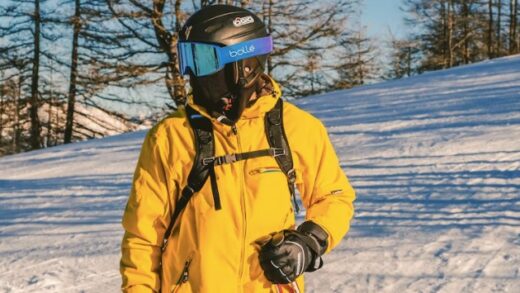What is All-Mountain Snowboarding?

Snowboarding is a sport that has gained immense popularity over the years, and one of the main reasons for this is the variety of snowboarding disciplines available. One such discipline is all-mountain snowboarding, a style of snowboarding that both beginners and experienced riders can enjoy. This article will explore all-mountain snowboarding, covering everything from what it is to the equipment needed to get started.
All Mountain Snowboarding:
All mountain snowboarding is a style of snowboarding that involves riding on all parts of the mountain, from groomed runs to off-piste terrain and everything in between. This snowboarding style is all about exploring the mountain and taking advantage of all the terrain available. Unlike other snowboarding disciplines that focus on one particular aspect of the mountain, all-mountain snowboarding is about versatility and adaptability.
One of the key aspects of all mountain snowboarding is the freedom it provides. You can ride wherever you want, and the snowboarder can choose the type of terrain they want to tackle based on their skill level and preferences. This freedom is what makes all-mountain snowboarding so appealing to many riders.
Equipment Needed for All Mountain Snowboarding:
As with any snowboarding discipline, the equipment needed for all-mountain snowboarding varies slightly. However, a few key pieces of equipment are essential for all-mountain snowboarding.
Snowboard:
An all-mountain snowboard is the best option for this discipline. These snowboards are designed to be versatile and can handle any terrain. They are typically medium in flex and have a directional shape, making them easier to ride in both directions.
Boots:
Snowboarding boots are an essential piece of equipment for all-mountain snowboarding. They must fit well and provide good support for the foot and ankle. The type of boots you choose will depend on your riding style and skill level.
Bindings:
Snowboard bindings are used to attach the boots to the board. The bindings need to be sturdy and provide good support for the rider’s feet.
Helmet:
A helmet is necessary for all snowboarding disciplines, including all-mountain snowboarding. It provides essential protection for the rider’s head in the event of a fall or accident.
Other equipment that can be useful for all-mountain snowboarding includes goggles, gloves, and a jacket. These items help to keep the rider warm and protected from the elements.
Skills Needed for All Mountain Snowboarding:
All mountain snowboarding requires a combination of balance, agility, and speed control skills. The rider needs to be able to adapt to different types of terrain and adjust their riding style accordingly. It requires understanding snowboarding techniques and making split-second decisions while riding.
Ability to read the terrain:
One of the key skills needed for all-mountain snowboarding is the ability to read the terrain. The rider needs to be able to assess the snow conditions, the steepness of the slope, and the obstacles they may encounter. It helps them decide their riding style and the best route to take down the mountain.
Speed control:
Another essential skill for all mountain snowboarding is speed control. The rider must control their speed on steep slopes and crowded areas. It requires good balance and adjusting the board’s edge angle to slow down or speed up.
Physical fitness:
Finally, all-mountain snowboarding requires a good level of physical fitness. The rider needs good endurance and strength to ride long distances and tackle challenging terrain.
Benefits of All Mountain Snowboarding:
All mountain snowboarding has many benefits, both physical and mental. It provides a full-body workout that helps to improve strength, balance, and coordination. It also helps to reduce stress and improve mental well-being, as riders can enjoy the beauty of nature and the freedom of the mountains.
In addition to the physical and mental benefits, all-mountain snowboarding provides adventure and exploration. The rider can explore new mountain areas and challenge themselves to tackle more difficult terrain.
Another benefit of all-mountain snowboarding is the social aspect. It is a great way to meet new people with the same passion for snowboarding. It can also be a fun activity to do with friends and family.
Conclusion:
All mountain snowboarding is a style of snowboarding that provides a unique experience for riders. It allows them to explore the entire mountain and take on different types of terrain. The equipment needed for all-mountain snowboarding is similar to other snowboarding disciplines, but the skills required are different.
If you’re interested in trying all-mountain snowboarding, taking lessons from a qualified instructor is recommended. They can teach you the proper techniques and provide valuable tips on how to improve your skills. With practice and dedication, you can become a skilled all-mountain snowboarder and enjoy the freedom and adventure it provides.


